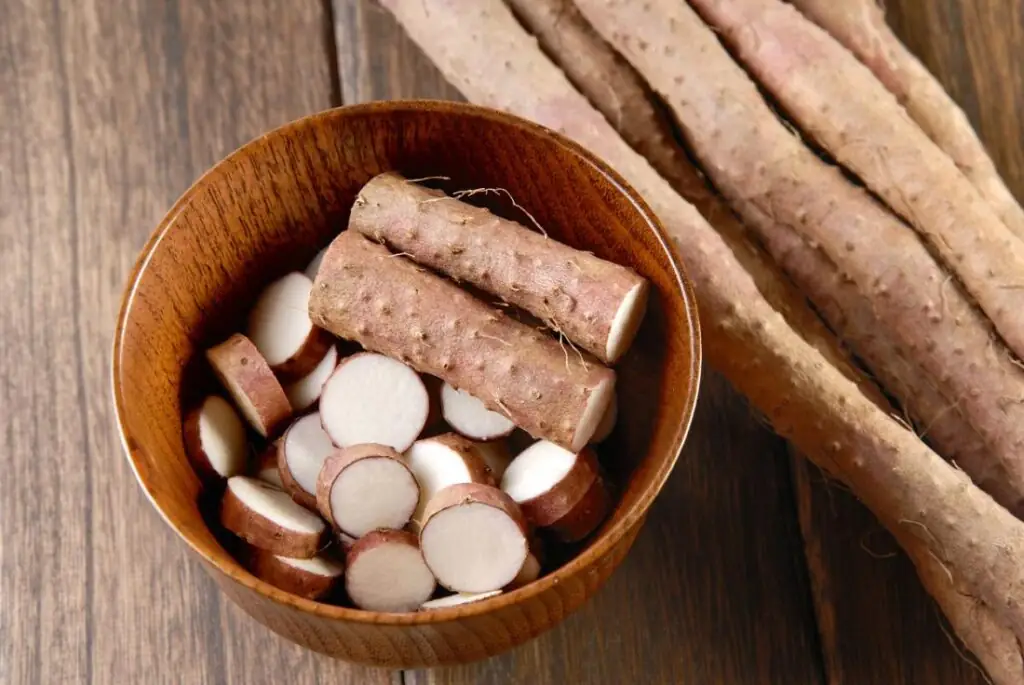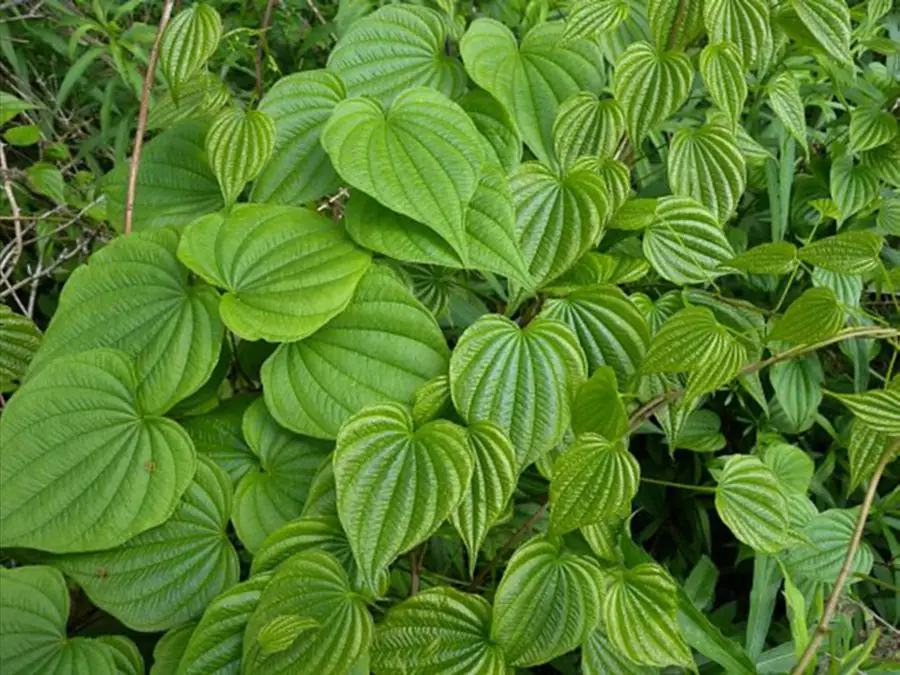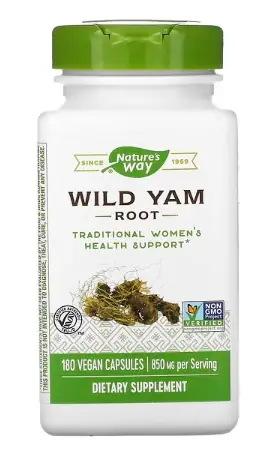All About the Health Benefits of Yam and Sweet Potato

These vegetables look alike, and people often get them mixed up. So, what are the health benefits of yam and the sweet potato? How do you tell them apart? Are they identical in their vitamin content?
Read on, and you will find the answers to all these and numerous other questions.
Differences Between Sweet Potatoes and Yams
Each of these vegetables has a distinctive appearance:
- The skin of yams is rough and has a dark brown color. The skin of sweet potatoes is smooth and has an easily noticeable reddish (or orange) tint.
- The white flesh of yams resembles regular potatoes: it is dry and starchy. The orange flesh of sweet potatoes is soft.
- Yams develop buds (also called eyes), while sweet potatoes do not.
The only reason why people still confuse one vegetable with another is that in the early 20th century the manufacturers of sweet potatoes often mislabeled them as yam to clearly distinguish these vegetables from regular potatoes. Unfortunately, this marketing trick is still in use today.
In fact, yams are mostly grown and eaten in tropical regions. Most grocery stores in America and Europe sell sweet potatoes even if they mislabel them as yams. To buy yams, you need to shop at a specialty store.

Differences in Vitamin Content
Sweet potatoes are among the best food sources of:
- vitamin A (120% daily value per 100 grams or 3.5 oz)
- vitamin C (24% DV)
- vitamin B6 (22% DV)
They also contain measurable quantities of vitamins B1 (10% DV), B2 (9% DV), B3 (10% DV), and vitamin E (5% DV).
On the other hand, yams are only rich in three vitamins:
- vitamin C (21% DV)
- vitamin B6 (23% DV)
- vitamin B1 (10% DV)
All other vitamins are only present in yams in limited quantities.
Differences in Dietary Mineral Content
Sweet potatoes contain very high quantities of manganese (24% DV, essential for numerous chemical reactions within cells). They are also moderately high in potassium (10% DV, required for blood pressure normalization), magnesium (8% DV, which is a part of every living cell), and phosphorus (8% DV, essential for bones).
Yams are rich in manganese (19% DV), potassium (17% DV), and magnesium (6% DV).
All in all, while sweet potato can be called a slightly better source of vitamins and dietary minerals, yams are by no means an empty food.

Caloric Content
Yams contain 118 kilocalories per 100 grams (3.5 oz), while sweet potato only provides 90 kilocalories. A combination of relatively high caloric content and good resistance to humidity (which means that it can be stored for a long time) makes yams an excellent staple food for people who live in tropical areas.
On the other hand, the fact that sweet potato is less caloric than most cereals makes it a good choice if you don’t want to put on weight.
Sugars and Starch
Yams are very low in sugars and high in starch. As a result, the glycemic index of yams is low (51), and this vegetable is suitable for people with diabetes.
While sweet potatoes feature about 6.5 grams of sugar per 100 grams, if you boil them in salted water, their glycemic index will be 59, which is a middle level. Thus, if you suffer from diabetes, it would be wise to boil (not fry) your sweet potatoes and not overindulge in them.
Dietary Fiber
Both these vegetables are moderately good sources of dietary fiber that serves three important functions:
- cannot be digested by the stomach and helps you feel sated for a longer time: this is especially helpful if you are on a diet
- provides food for good bacteria that live in your gut and support intestinal health
- in combination with water it makes your food clump bulkier and heavier, which is important for having regular bowel movements.
FAQ
In this section you will find the answers to the most common questions about yams and sweet potatoes.
What Are the Health Benefits of Sweet Potato Leaves?
These leaves (also called “camote tops” in Spanish-speaking countries) are edible and make an excellent addition to your dishes. You will need to boil them to make them soft and remove a slightly bitter taste they may have. Chop them for your salads, blend them into smoothies, or use them to add flavor to your soups and stews.

Potato leaves are believed to be rich in dietary fiber as well as contain high levels of dietary minerals (namely, calcium, potassium, and phosphorus) and vitamins (namely, vitamins A, C, and K).
What Are the Health Benefits of Sweet Potato Skin?
Just like the leaves of this vegetable, its skin is also edible. In fact, the lion’s share of the plant’s dietary fiber is in the skin, so if you want to take care of your stomach health, eat this vegetable unpeeled.
The only thing you need to be sure of is that the skin is totally clean, and there are absolutely no dirty spots on it. Wash potatoes under running water and rub them thoroughly with a vegetable brush to remove dirt and traces of pesticides.
What Are the Health Benefits of Japanese Sweet Potato?
The main difference between different varieties of sweet potatoes lies in their caloric content. Thus, the sweeter and starchier Japanese variety (132 kilocalories per 100 grams) is more caloric than the regular one (90 kilocalories).
All in all, if you try to limit your caloric intake, the regular variety will be a better choice for your diet. If, on the other hand, you burn off a lot of calories every day, the Japanese variety can help you replenish your body’s energy.
What Are the Health Benefits of Yellow and Purple Yam?
Yams that have tubers of such colors as yellow and purple are close botanical relatives of regular yams, so their nutritional profiles are generally similar. On the other hand, both yellow and purple yams get their distinctive colors from bioactive compounds called anthocyanins that have marked antioxidant properties. Thus, if you can choose between regular yams and yellow/purple varieties, it might be better for your health to decide on the latter.
What Are the Health Benefits of Yam Leaves?
First, you need to make sure that you really mean ‘yam leaves’ and not ‘sweet potato leaves.’ Potato leaves (read about them above) are much easier to find in North America and Europe compared to yam leaves that are usually consumed in territories where they are grown, i.e., tropical regions.
Second, some varieties of yam leaves can be toxic. If you really want to buy yam leaves, make sure you get them from a dependable seller. On the other hand, potato leaves are absolutely safe to eat.
What Are the Health Benefits of Wild Yam Root?
Wild yam (also called American yam and devil’s bones) is a plant that comes from North America. Its roots have been used in folk medicine for more than three hundred years to treat stomach upset and menstrual cramps. While there is insufficient evidence that wild yam root can improve symptoms related to menopause, you can still give it a try to see for yourself whether it works in your case:

- 180 capsules
- 850 mg of wild yam root per capsule
- Well-known brand
What Are the Health Benefits of Chinese Yam?
Chinese yam is a yam variety that can propagate in temperate climate zones. The tubers (‘bulbs’) of Chinese yam do not require boiling or frying and can be eaten raw (if sliced or grated). Their taste is bland and starchy; from the point of view of nutrition, they are similar to regular yams.
Chinese yam is often mistaken for wild yam (see above), which is claimed to be beneficial for health. Unfortunately, there is not enough scientific evidence for these claims.
What Are the Health Benefits of Cocoyam?
Cocoyam is a tropical plant that, botanically speaking, doesn’t have anything in common with either sweet potato or yams. To make matters even more confusing, there are, actually, two cocoyams — old cocoyam (or taro) and new cocoyam (or malanga) which are also botanically unrelated. Both cocoyams produce roots that are rich in starch and leaves that can be added to salads.
Both old (taro) and new (malanga) cocoyam provide about 142 kilocalories per 100 grams. Taro is rich in dietary fiber, vitamin E, and vitamin B6. Malanga is also a very good source of dietary fiber and contains high levels of potassium. Allergy to malanga is believed to be extremely rare, so if you find it in a food store, don’t miss a chance to enrich your diet.
Is Yams Really Healthy?
If you are asking about the ‘true’ yams, the answer is yes. It is a staple food for millions of people that is relatively rich in calories and contains several important dietary minerals and vitamins.
On the other hand, some manufacturers of sweet potato chips and fries mislabel them as yam chips and fries. Health benefits of sweet potato (‘yam’) fries are dubious as they often contain excessive quantities of fat (which can lead to obesity) and sodium that boosts their taste (which is tied to elevated blood pressure). So, it is not a very good idea to overindulge in snacks like that.Now you know what are the health benefits of yam and the sweet potato: both these vegetables are rich in minerals, vitamins, and dietary fiber and will be an excellent addition to your diet. What’s more, such cocoyam plants as taro and malanga are also well worth a try.